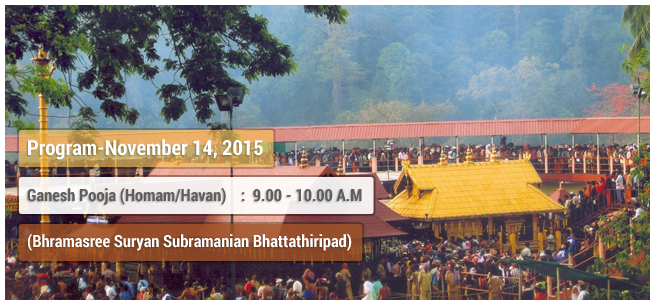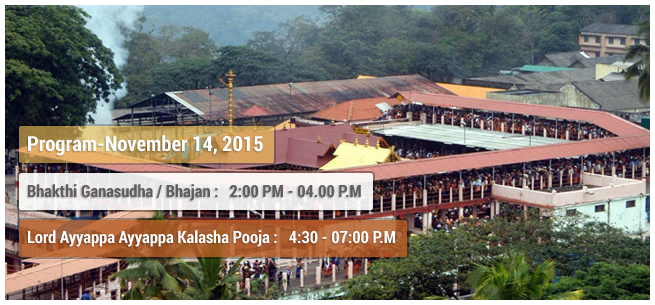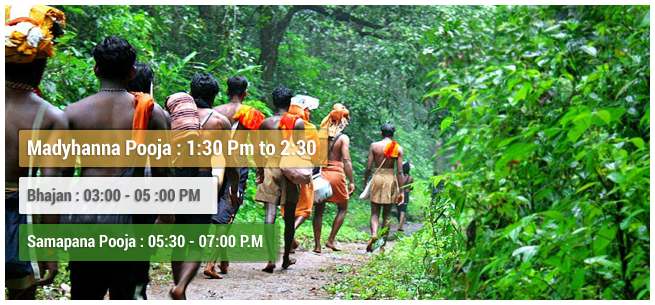Pooja Done by Yajnacharya
SUHASINI POOJA
Suhasini puja, also referred as Suvasini Pooja, is a ritual observed during Sharad Navaratri. This puja is an uncommon ritual but during Navaratri days it is auspicious. The pooja involves worshipping a married woman, Sumangali, considering her as a manifestation of Goddess Durga.In some regions, Suvasini pooja is a compulsory ritual during Sharad Navratri. As Kumari Pooja, Suhasini Puja is also performed. A married woman is offered meals, fruits, clothes along with dakshina or santarpana and worshipped as the Goddess for the day. Suhasini Pooja is a powerful ritual done to eliminate all sorts of relationship problems. Particularly, it is good to remove “curses” from previous broken relationships or “curses” from jealous people that are unknowingly affecting the success of your relationships. The pooja done on your behalf would involve worshipping elderly married women, considering them to be the manifestations of the Deity. This ritual is incredibly powerful when performed during the Navaratri time. You feel the benefit effects immediately and harmony begins to rule your love life. So, participate in this very powerful ritual blessed by Baba and look forward to a vibrant, happy love life. During these rituals the Sri Chakra in its three dimensional form known as ‘Sri Maha Meru’ will be energized. The presence of Maha Meru brings wealth to the native. The worship of Maha Meru is considered to be the highest form of Goddess worship.
SUHASINI Pooja during Navaratri:
A ritual reading (Japa) of the text Devi Mahatmyam, (other name Durga Saptashati, ) is part of the Navaratri celebrations in honour of the Goddess. The text contains 700 (saptashata - "seven hundred") verses, arranged into 13 chapters. The Devi Mahatmyam consists of chapters 81-93 of the Markandeya Purana. She who is pleased by the worship performed by married women. There are Tantric rites in which married women [sumangalis] are worshipped as Devi.
Suvasini pooja and Dhampathi Pooja (married couple). Their feet are washed,kumkumis applied on the forehead and pooja is done as if they are goddess. they are feasted and given gifts and new clothes by the worshippers.
SRI CHAKRAM
Chakra pooja or Yantra pooja is the worship of a deity in a diagrammatic form. This type of worship exists in a lot of the other parts of the world also. The worship of Devi in Shreechakra is regarded as the highest form of the Devi worship. Originally Lord Shiva gave 64 Chakras and their Mantras to the world, to attain various spiritual and material benefits. For his consort Devi he gave the Shree Chakra and the highly coveted and the most powerful Shodashakshari mantra, which is the equivalent of all the other 64 put together.
“Ka E i La Hreem – Ha Sa Ka Ha La Hreem – Sa Ka La Hreem”
It is said that in the beginning God, who was one, wanted to become many and enjoy himself. As the first step to creation he created Devi – the total cosmic Female force. For the male part, out of his left he created Shiva, out of his middle he created Brahma and out of his right he created Vishnu. That is why many regard the Devi as more powerful than the Trinities and hence She is called Parashakti or Paradevi – Para meaning beyond . Brahma created the universe. Vishnu controls and runs the universe. Shiva along with Shakti is engaged in the eternal dissolution and recreation of the universe.
The Bindu in the center of the Shreechakra is the symbolic representation of the cosmic spiritual union of Shiva and Shakti. Apart from that the Shree Chakra also embodies countless number of deities and represents the whole of creation. Hence by worshipping the Devi in Shree Chakra one is actually worshipping the highest ultimate force in the Tantric form.
The Shodashakshari mantra is one of the most guarded secrets of tantra. Usually the Guru gives it to a highly deserving and tested disciple. Very few get it. Even in the Mantra Shastra, where all other mantras are openly and clearly given, the Shodashakshari Mantra is not directly given. Several hints about the mantra are given and you are asked to get the mantra if you are capable and deserving. The opening versus of the mantra shastra chapter on Shree Chakra says, “Your head can be given, your soul can be given but the Shodashakshari Mantra of the Devi cannot be given”.
However, Shree Chakra can also be worshipped by other Devi mantras. There are several traditions of the worshipping the Shree Chakra. We are giving here a very simple and still very effective pooja of Shree Chakra. It is known as the Shree Chakra Navavarana pooja as per the Khadgamala Vidhi. For all round spiritual and material benefits it is a highly effective pooja. Any one can perform it.
If you cannot do a detailed worship, simply worship the Sri Yantra 108 times with the simple Devi Mantra:
“Om Aim Hreem Shreem Sri Lalita Tripurasundari Padukam Poojayami Namah”
Components of Sree Chakram:
The Basics of Sri Yantra: Before starting the worship it is advisable to know about the way the Sri Yantra is constructed, what all it represents, about the 9 Avaranas, the deities, their gunas and significance, so that your worship is more meaningful. The following are the authentic details as given in various Tantra & Mantra scriptures.
Five downward pointing triangles representing Devi intersect with four upward pointing triangles representing Siva, forming 43 triangles including the central triangle.
From the five Shakti triangles comes creation and from the four Shiva triangles comes the dissolution. The union of five Shaktis and four Fires causes the chakra of creation to evolve.
At the centre of the bindu of the Shri Yantra is Kamakala, which has three bindus. One is red, one is white and one is mixed. The red bindu is Kurukulla the Female form, the white bindu is Varahi the Male form, and the mixed bindu is the union of Shiva & Shakti – the individual as the potential Shri Cakra. Varahi, the father-form, gives four dhatus to the child and Kurukulla, the mother-form, gives five dhatus to the child. Theses represent the nine dhatus of the human body.
Varahi’s four fires are the 12 (4 x 3) sun Kalas, the 12 Zodiac constellations. Kurukulla’s five triangles are the 15 (5 x 3) Kalas of the moon, 15 lunar Tithis.
These nine triangles also represent the nine stages of growth of the human child in the womb. Surrounding the 43 triangles formed by the intersection of the nine triangles is the 16 petals circle. Surrounding the 16 petal circle is an 8 petal circle. After that the 3 lines and at the outermost part of the Sri Yantra there are 3 lines called the Bhupura.
The 43 triangles constitute the six inner sections called Avaranas, the two circles of petals are two more avaranas and the Bhupura of 3 lines is the last Avarana.
These 9 Avaranas of the Sri Yantra have various presiding Devis. They are the Devi’s Parivar (retinue) of total 108. In the Srichakra pooja they are systematically worshipped one by one with their names and mantras. The presiding Deity of Sree Chakra, is Known as Lalita Tripura Sundari. Lalita means The One Who Plays. All creation, manifestation and dissolution is considered to be a play of Devi. Tri-Pura means the three worlds and Sundari means beauty. She is the transcendent beauty of the three worlds.
Tripura also signifies:- She is the ruler of the the three gunas of Satva, Rajas and Tamas; and sun, moon and fire – the zodiac and the planets, and therefore Time itself; She is also “tripura” as Will (Iccha), Knowledge (Jnana) and Action (Kriya). She is also “tripura” as intellect, feelings & physical sensation; and She is triple as the three states of the soul – awakening, dreaming and -sleeping states. Her five triangles also represent the Pancha Tatwas and the Pancha Bhootas. (This is what the verse in Lalita Sahasranama means by -”Panchami pancha bhuteshi pancha sankhyopacharini “.
Lalita holds five flowery arrows, noose, goad and bow. The noose represents attachment, the goad represents repulsion, the sugarcane bow represents the mind and the flowery arrows are the five sense objects.
Sri Chakra worship is one of the most guarded secrets of tantra and the Sri Yantra is the most guarder Yantra.
“Nairutaicha Ganeshanaam Sooryam Vayuvya eevacha
Eeshane Vishnu Agneye Shivamchaiva prapoojayet”
When you sit facing the east and with the tip of the top triangle pointing at you, at the bottom right hand side corner of the Shreechakra is guarded by Lord Ganesha. The bottom left hand side corner is guarded by Lord Surya. The top left side corner is guarded by Lord Vishnu and the top right corner of the Shreechakra is guarded by Lord Shiva. They must be worshipped before starting the Pooja of the Nava-Avaranas.
After that the eight primordial directions are guarded by the eight Lokapalas. Indra guards the East, Agni guards the South East, Yama guards the South, Nirriti guards the South West, Varuna guards the West, Vayu guards the North East, Soma guards the North and Ishana guards the North East.
As if this is not enough, each of the first eight Avaranas are guarded by eight Bhairavas and eight Bhairavis! What is more these 64 pairs of Bhairavas & Bhairavis are assisted by 10 million yoginis each – total 640 million (64 crores). This is what the verse in Lalita Sahasranama says –”Maha chatu-shshashti-koti yogini ganasevita.”
Yes. Reaching Her is a bit difficult!
The nine avaranas as per Mantra Mahodadhi
The First Avarana – 3 lines
GRAHA SHANTI POOJA
Graha Shanti Pooja of any one planet: If a planet is not well placed in ones chart its shanti pooja/Homa removes or reduces the negative effects and gives better results. Apart from that Graha shanti is desirable in case of severe Mangala dosha or sadesati. During the dasa or antardasa of a planet if the planets graha shanti homam is performed one experiences better results. Apart from that, anyone desiring improvement in any particular aspect of life, like profession or health etc., can get the Shanti pooja/homa of the particular ruling planet for better results.
The planet’s pooja is done with the prescribed materials and 1008 namavali of the planet are recited and 1008 sookta recital is done. Pooja is performed by Sooryan Subramanian Namboodirippadu.
MAHA GANAPATHI HOMAM
Ganapathi homam is performed to beget happiness, prosperity and good health. Anyone is desirous of praying to God to remove any obstacles in any of his plan/ work/Business /action and also to be victorious in his deeds can pray to Lord Ganesha. Ganapathi homam can be performed to please Kethu and hence anyone who has Kethu dasa or bhukthi or wishes to appease Kethu can participate in the homam. Performing Ganapathy Homam once every year gives prosperity, health and wealth. Especially in Kerala &Tamilnadu People Starts All Rituals By Performing Ganapathi Homam. As per ganesh puran plenty types of ganapathi homam can be done example: Mahaganapathi Homam, Asthadravya Ganapathi Homam, Sahasra modaka Ganapathi Homam,etc…
Before starting any new venture or anything afresh, Ganesh Homam is must. If one is suffering from losses, when starting a new business or investments or when one is getting married, or to remove obstacles or for celebration of your or your child's birthday, Maha Ganpathy Homam is recommended.Ganapati or Ganesha, the Lord of Gananas, the elephant faced God, represents the power of the Supreme Being that removes obstacles and ensures success in human endeavors. Ganesha is revered as the son of the Shiva and Parvati, and is always honored first in most worship services and rituals.Ganesha is also known as Ganapati, Vigneswara, Vinayaka, Gajamukha and Ainkaran. He is worshipped for siddhi, success in undertakings, and buddhi, intelligence. He is worshipped before any venture is started. He is also the God of education, knowledge and wisdom, literature, and the fine arts. Ganesha is also one of the five Gods the worship of whom was popularized by Adi Shankaracharya; the other four are Vishnu, Shiv.. The worship of these five deities is called the pancayatan Homam. In some cases, a sixth G od, Skanda is also worshipped
The large head of an elephant symbolizes wisdom, understanding, and a discriminating intellect that one must possess to attain perfection in life. The wide mouth represents the natural human desire to enjoy life in the world. The large ears signify that a perfect person is the one who possesses a great capacity to listen to others and assimilate ideas. The trunk relates to the power of human mind, which must be strong enough to face the ups and downs of the external world and yet delicate enough to explore the subtle realms of the inner world. The two tusks denote the two aspects of the human personality, wisdom and emotion. The right tusk represents wisdom left tusk represents emotion. The broken left tusk conveys the idea that one must conquer emotions with wisdom to attain perfection.
Performing Ganapathy Homam once every year gives prosperity, health and wealth. If any one is running Ketu dasa or bhukti or there is some dosha of Ketu in the horoscope, he shall perform Ganapathy Homam and get-relief. Ganapathy Homam should be performed in the early morning and Poornahuthi to be offered during sunrise, unless any other time is specifically mentioned to suit the particular purpose. Normally, only Vedic ways of Homams are performed
AYYAPPA YAJANAM
Overcome Shani Dosha
Lord ayyapan is said to be the son of Lord Vishnu and Lord Shiva. Lord Ayyappan is also known as lord shaneeswara and as the presiding deity over the planet shani, according to some beliefs. Hence, it is believed that appeasing lord ayyappa will ensure protection from all effects of shani dosha. It is often difficult for people to perform major poojas or visit temples in a regular basis. The following is a simple yet very effective ritual that can be performed by anyone to be blessed by lord ayyappan.
It will bring the full blessings of lord ayyappan to you and your family, hence ensuring the removal of miseries and distress.











